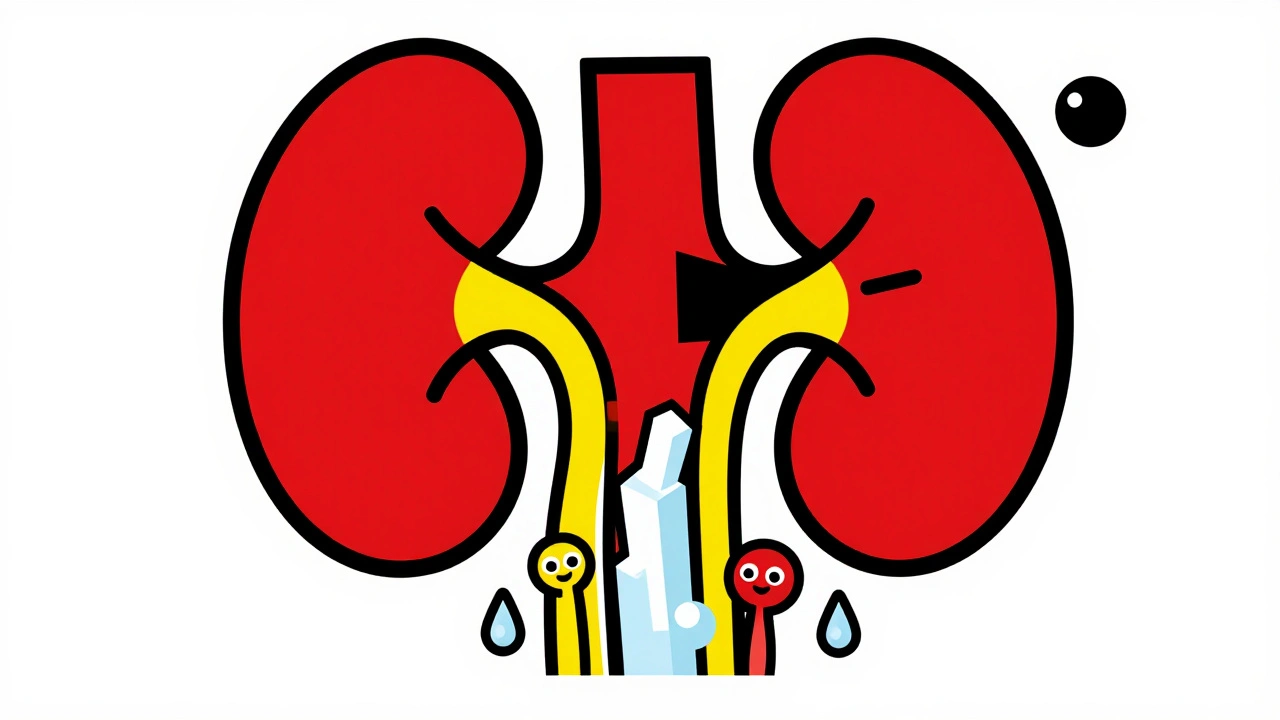Canagliflozin: What You Need to Know
Canagliflozin is a prescription medicine used mainly for type 2 diabetes. It belongs to a group called SGLT2 inhibitors. These drugs help your kidneys remove extra sugar through urine. That lowers blood sugar and often helps with weight and blood pressure too.
How canagliflozin works
It blocks a kidney protein that reabsorbs glucose. With that blocked, more sugar leaves your body when you pee. The effect is steady. People usually see lower fasting and after-meal sugars. Doctors may choose canagliflozin when metformin alone does not control blood glucose.
Most common doses are 100 mg or 300 mg once daily, taken before the first meal. Your doctor picks the dose based on your kidney health and other meds. Never change the dose without talking to your provider.
Safety tips & what to watch for
Canagliflozin can cause genital yeast infections and urinary tract infections. These are the most common side effects. You may also feel dizzy, especially when standing up. That can happen if your blood pressure drops. Drink enough fluids but avoid excess alcohol. If you get signs of dehydration, lightheadedness, or fainting, contact your doctor.
There is a rare but serious risk of diabetic ketoacidosis (DKA). DKA can occur even with normal blood sugar. Watch for nausea, vomiting, belly pain, fast breathing, or confusion. Also tell your doctor if you plan surgery or will fast for any reason. Your provider may stop the drug temporarily.
Canagliflozin may affect kidney function. Your doctor will check your creatinine and eGFR before starting and during treatment. It is not recommended if your kidneys are severely impaired. If you are pregnant, trying to get pregnant, or breastfeeding, discuss options with your healthcare team.
Drug interactions matter. Tell your doctor about diuretics, blood pressure meds, insulin, and medicines that affect kidney function. Combining canagliflozin with insulin or insulin secretagogues may raise the risk of low blood sugar.
Practical tips for taking canagliflozin
- Take it once a day before your first meal.
- Keep hydrated and watch for yeast infection signs.
- Monitor blood pressure and kidney tests as advised.
- Carry ID that notes you take a diabetes medicine if you are at risk for low blood sugar.
- Ask your provider about stopping the drug before surgery.
If you buy diabetes meds online, use pharmacy sites that require a prescription and show clear contact info. Avoid offers that sound too good to be true.
Want more? Read medicine guides and personal stories on our site to learn about dosing, side effects, and safer online buying. Talk with your healthcare team before making changes to treatment.
Ask your doctor how will you track success. Common checks include A1c every three months until stable, weight, and blood pressure. Canagliflozin has been linked to a small higher risk of lower limb amputation in some studies. Check your feet daily, report sores or infections right away, and follow wound care advice. If cost is a problem, ask about coupons, manufacturer savings, or patient assistance programs today.
SGLT2 inhibitors help control diabetes by flushing sugar into urine - but that increases yeast and urinary tract infection risks. Learn who’s most at risk, what symptoms to watch for, and safer alternatives.
As a diabetic, I've discovered that canagliflozin can be a game changer in managing my blood sugar levels, but it also emphasizes the importance of proper foot care. To prevent diabetic foot complications, it's crucial to maintain good hygiene by washing and drying our feet daily. Additionally, keeping our toenails trimmed and wearing comfortable, well-fitted shoes can help avoid injuries. It's also essential to inspect our feet regularly for any signs of cuts, blisters, or infections, and to seek medical help if needed. By combining canagliflozin with diligent foot care, we can reduce the risk of diabetic foot complications and enjoy a healthier lifestyle.

